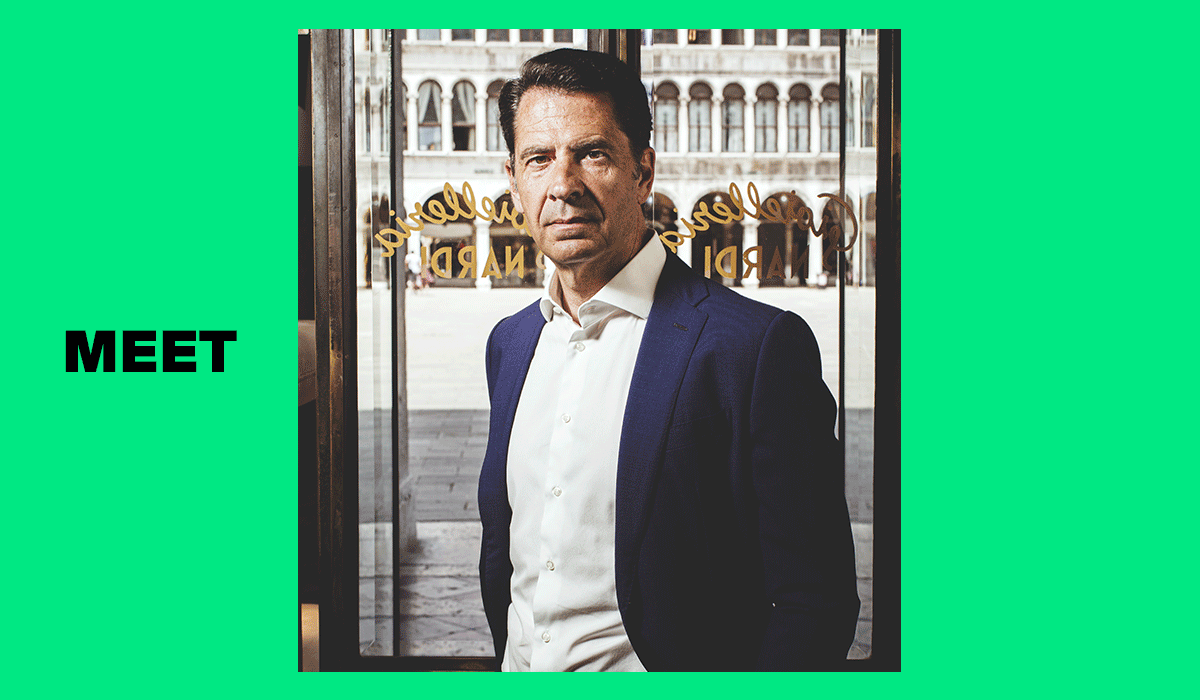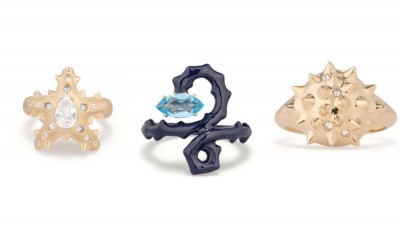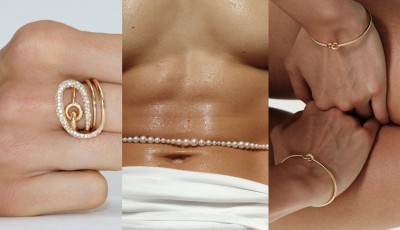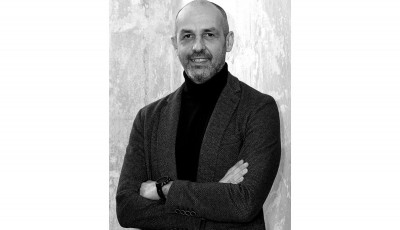Alberto Nardi: The Value of Old-style Jewelry Stores
A historical jeweler’s in Venice, Nardi reacquires a concept that aims at interpersonal relations with the customer and a store model that “subtracts”, opening the doors to innovation
Creativity impetus, new sales models, digitization. What is a historical jeweler’s like Nardi focusing on at the moment?
The crisis was traumatic for us. But, on the other hand, with a view to the future, we rolled up our sleeves to work out the development possibilities and to adjust our work in anticipation of a post-Covid recovery. And creativity has been, and still is, our kick-off. We have resumed an important concept for the jewelry store, namely, the symbolic and talismanic aspect of jewelry which should be its real strong point again. We want to reacquire a value that is not only aesthetic and venal, but gives jewelry a new meaning by developing powerful symbology that transmits the relative message. An area that the entire sector should look at. I think that jewelry has so many values and cards to play in terms of sales and dialogue. In recent years, we perhaps focused on few aspects, like carats and costs which are, however, the least important elements. We are taking another look at jewelry.
In a Venice that lives mainly on tourism, how do you react to an empty square?
When we re-opened the store, I was as excited as if it were my first day at school. It was an almost childish emotion, with the desire to compete, to resume old habits, to repossess daily life, even in a context with a radically changed reality. The empty square is dramatically upsetting on the one hand, but on the other, it makes you understand the power of beauty, it rebalances you, making you go back to the right volumes, sounds and value of tradition.
Tradition is a concept that does not often speak the new technological languages. How can these two aspects, both indispensable in terms of jewelry, really be compatible?
I have always worked around the concept and true meaning of tradition – from the Latin word traditio-onis, or rather, consignment, transmission - which, in my opinion, does not mean clinging to the past, which is what I see in many “museum stores”, unfortunately. My concept of a modern store removes, subtracts. It focuses on the value of jewelry and projects things of the past towards the future. I want innovation, and innovation techniques, to be part of my store concept.
What is your model of a modern jewelry store?
I don’t want an old jewelry store but a new model of a store that looks to the future, to contemporaneity and that doesn’t do things because they have always been done that way. A store that takes the good things from the past and reviews them with an eye to the future. Obviously, communication activities and digital interventions must go hand in hand with this. At the moment, in fact, we are restyling our website which will act as a kind of current and modern business card. It will be useful for encouraging sales and giving an image that is coherent with what we want to transmit. And all very elegantly because I believe that coherence is always the most important aspect for a company, from the jewel to the website, to the photographs, to the way you relate with the customer. Nothing must ever be off-key; everything has to be in syntony so as not to ruin the beauty of buying jewelry. Saying “now I want to sell” is not enough because if you don’t have customers, if you don’t have an attractive website, the desire to sell will get you nowhere. You need something cerebral; you need positive steps.
How much does the "marketplace" count, and by that, I obviously mean your city, Venice?
Going back to what I said earlier, even the way the city “presents itself” to the visitor is fundamental. If someone is welcomed badly, the whole atmosphere feels it, even if the person has a positive attitude. A first-rate reality in a lacking context suffers but this is a discourse that could be applied to the entire system in Italy. Venice is a negative wonder with a historical center lacking in all significance. It has become a taproom of low-cost street food. We have undersold our excellence, removed content and given a false representation of a glorious past. We need to give back meaning to historical centers, which goes beyond the tourism monoculture and consider people as visitors, not tourists. I don’t care where they come from, installing relations is the important thing. Our company is particular and I have made an extremely Manichean decision: I want to be an old-style jeweler, while 90% of the stores we see now are retailers.
What is the most important aspect of selling jewelry?
Going back to interpersonal relations with the clientele. The jeweler must be a friend, a confidante that gives serious advice. We have to go back to skills, with people able to develop friendly relations with the customer. It is an old model that dates back to the early ‘90s that needs to be interpreted in a modern key using social networks and all the other tools we have at our disposal these days. If you go into a boutique and you are welcomed by name, and the owner knows your tastes, you feel part of a mechanism. I have always hoped to see this approach come back, even in small numbers. Then there is also a question linked to jewelry that has to be renewed and further efforts must be made to be at the service of the younger generations. Unfortunately, we have been sitting on models that belonged to the past. But now we have to give the young content and remember that it is much more powerful than a mobile phone. A form of capitalization still remains but it is not the essential aspect. What is important is that it is handed down and that the young people understand this value. Let me give an example. I always carry with me a little ivory sculpture that my grandfather gave me. A Japanese button, in ivory, whose intrinsic meaning is of enormous value to me. It is like a lucky charm, if I don’t put it in my pocket, I feel as though something is missing. Well, considering the current moment, I would like to offer the concept of a ring-come-talisman for men in order to provide this symbol of strength that, in this moment of suffering, can’t do any harm.
On the production front, how do you balance unique pieces with the need to have an ongoing collection?
Our production follows concepts of “collection” which we reproduce and integrate with items that we regularly make. Every year, however, we add ideas and new pieces because my mind is always working and I always need to have something new. As for the younger aspect, a while ago I introduced the "Mia Nardi" line, which has a floral style and is made in Florence. It is ready-to-wear jewelry in gold, enamel and stones that is meant as a luxury accessory for independent women. As for unique items, on the other hand, we produce tiny works of art for the Brafa Art Fair in Brussels. Jewelry in the sense of “high jewelry” is not my thing. We mainly make unique items and then develop the more classic Nardi lines which are elaborations of stylistic models linked to Venice and sold as luxury souvenirs. From the Venetian mask to the gondola, I want them to be seen as a trait d’union between an experience and a pleasant moment in a much-loved location. Then there are the themes with a more cerebral and cultural touch, with ideas that come, for example, from the multi-colored enamel mosaic tiles in Torcello Basilica, from which we developed the collection with flooring tiles that I call mosaic. Lastly, Nardi’s famous Moretto brooches, which are still the most renowned on the market since the war (if they are not made or signed by us, the auction houses add the writing "in the style of..."). Nowadays, it is a little limiting due to being "politically correct" so I think that we will continue to produce them in the future but in a different way. Considering the current sensitivity, I will adopt a different approach based purely on aesthetics.
The crisis was traumatic for us. But, on the other hand, with a view to the future, we rolled up our sleeves to work out the development possibilities and to adjust our work in anticipation of a post-Covid recovery. And creativity has been, and still is, our kick-off. We have resumed an important concept for the jewelry store, namely, the symbolic and talismanic aspect of jewelry which should be its real strong point again. We want to reacquire a value that is not only aesthetic and venal, but gives jewelry a new meaning by developing powerful symbology that transmits the relative message. An area that the entire sector should look at. I think that jewelry has so many values and cards to play in terms of sales and dialogue. In recent years, we perhaps focused on few aspects, like carats and costs which are, however, the least important elements. We are taking another look at jewelry.
In a Venice that lives mainly on tourism, how do you react to an empty square?
When we re-opened the store, I was as excited as if it were my first day at school. It was an almost childish emotion, with the desire to compete, to resume old habits, to repossess daily life, even in a context with a radically changed reality. The empty square is dramatically upsetting on the one hand, but on the other, it makes you understand the power of beauty, it rebalances you, making you go back to the right volumes, sounds and value of tradition.
Tradition is a concept that does not often speak the new technological languages. How can these two aspects, both indispensable in terms of jewelry, really be compatible?
I have always worked around the concept and true meaning of tradition – from the Latin word traditio-onis, or rather, consignment, transmission - which, in my opinion, does not mean clinging to the past, which is what I see in many “museum stores”, unfortunately. My concept of a modern store removes, subtracts. It focuses on the value of jewelry and projects things of the past towards the future. I want innovation, and innovation techniques, to be part of my store concept.
What is your model of a modern jewelry store?
I don’t want an old jewelry store but a new model of a store that looks to the future, to contemporaneity and that doesn’t do things because they have always been done that way. A store that takes the good things from the past and reviews them with an eye to the future. Obviously, communication activities and digital interventions must go hand in hand with this. At the moment, in fact, we are restyling our website which will act as a kind of current and modern business card. It will be useful for encouraging sales and giving an image that is coherent with what we want to transmit. And all very elegantly because I believe that coherence is always the most important aspect for a company, from the jewel to the website, to the photographs, to the way you relate with the customer. Nothing must ever be off-key; everything has to be in syntony so as not to ruin the beauty of buying jewelry. Saying “now I want to sell” is not enough because if you don’t have customers, if you don’t have an attractive website, the desire to sell will get you nowhere. You need something cerebral; you need positive steps.
How much does the "marketplace" count, and by that, I obviously mean your city, Venice?
Going back to what I said earlier, even the way the city “presents itself” to the visitor is fundamental. If someone is welcomed badly, the whole atmosphere feels it, even if the person has a positive attitude. A first-rate reality in a lacking context suffers but this is a discourse that could be applied to the entire system in Italy. Venice is a negative wonder with a historical center lacking in all significance. It has become a taproom of low-cost street food. We have undersold our excellence, removed content and given a false representation of a glorious past. We need to give back meaning to historical centers, which goes beyond the tourism monoculture and consider people as visitors, not tourists. I don’t care where they come from, installing relations is the important thing. Our company is particular and I have made an extremely Manichean decision: I want to be an old-style jeweler, while 90% of the stores we see now are retailers.
What is the most important aspect of selling jewelry?
Going back to interpersonal relations with the clientele. The jeweler must be a friend, a confidante that gives serious advice. We have to go back to skills, with people able to develop friendly relations with the customer. It is an old model that dates back to the early ‘90s that needs to be interpreted in a modern key using social networks and all the other tools we have at our disposal these days. If you go into a boutique and you are welcomed by name, and the owner knows your tastes, you feel part of a mechanism. I have always hoped to see this approach come back, even in small numbers. Then there is also a question linked to jewelry that has to be renewed and further efforts must be made to be at the service of the younger generations. Unfortunately, we have been sitting on models that belonged to the past. But now we have to give the young content and remember that it is much more powerful than a mobile phone. A form of capitalization still remains but it is not the essential aspect. What is important is that it is handed down and that the young people understand this value. Let me give an example. I always carry with me a little ivory sculpture that my grandfather gave me. A Japanese button, in ivory, whose intrinsic meaning is of enormous value to me. It is like a lucky charm, if I don’t put it in my pocket, I feel as though something is missing. Well, considering the current moment, I would like to offer the concept of a ring-come-talisman for men in order to provide this symbol of strength that, in this moment of suffering, can’t do any harm.
On the production front, how do you balance unique pieces with the need to have an ongoing collection?
Our production follows concepts of “collection” which we reproduce and integrate with items that we regularly make. Every year, however, we add ideas and new pieces because my mind is always working and I always need to have something new. As for the younger aspect, a while ago I introduced the "Mia Nardi" line, which has a floral style and is made in Florence. It is ready-to-wear jewelry in gold, enamel and stones that is meant as a luxury accessory for independent women. As for unique items, on the other hand, we produce tiny works of art for the Brafa Art Fair in Brussels. Jewelry in the sense of “high jewelry” is not my thing. We mainly make unique items and then develop the more classic Nardi lines which are elaborations of stylistic models linked to Venice and sold as luxury souvenirs. From the Venetian mask to the gondola, I want them to be seen as a trait d’union between an experience and a pleasant moment in a much-loved location. Then there are the themes with a more cerebral and cultural touch, with ideas that come, for example, from the multi-colored enamel mosaic tiles in Torcello Basilica, from which we developed the collection with flooring tiles that I call mosaic. Lastly, Nardi’s famous Moretto brooches, which are still the most renowned on the market since the war (if they are not made or signed by us, the auction houses add the writing "in the style of..."). Nowadays, it is a little limiting due to being "politically correct" so I think that we will continue to produce them in the future but in a different way. Considering the current sensitivity, I will adopt a different approach based purely on aesthetics.






